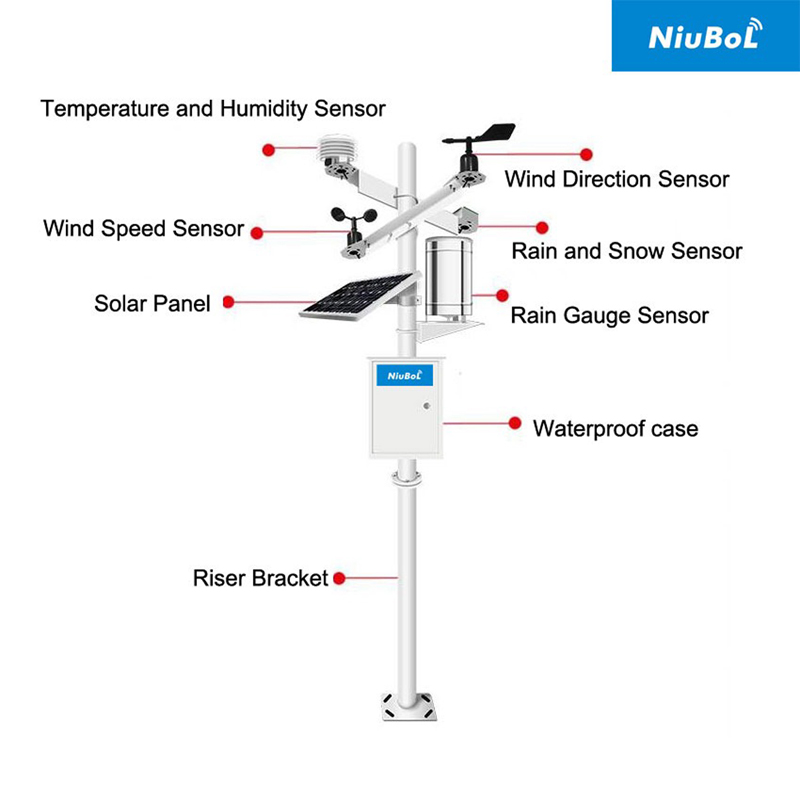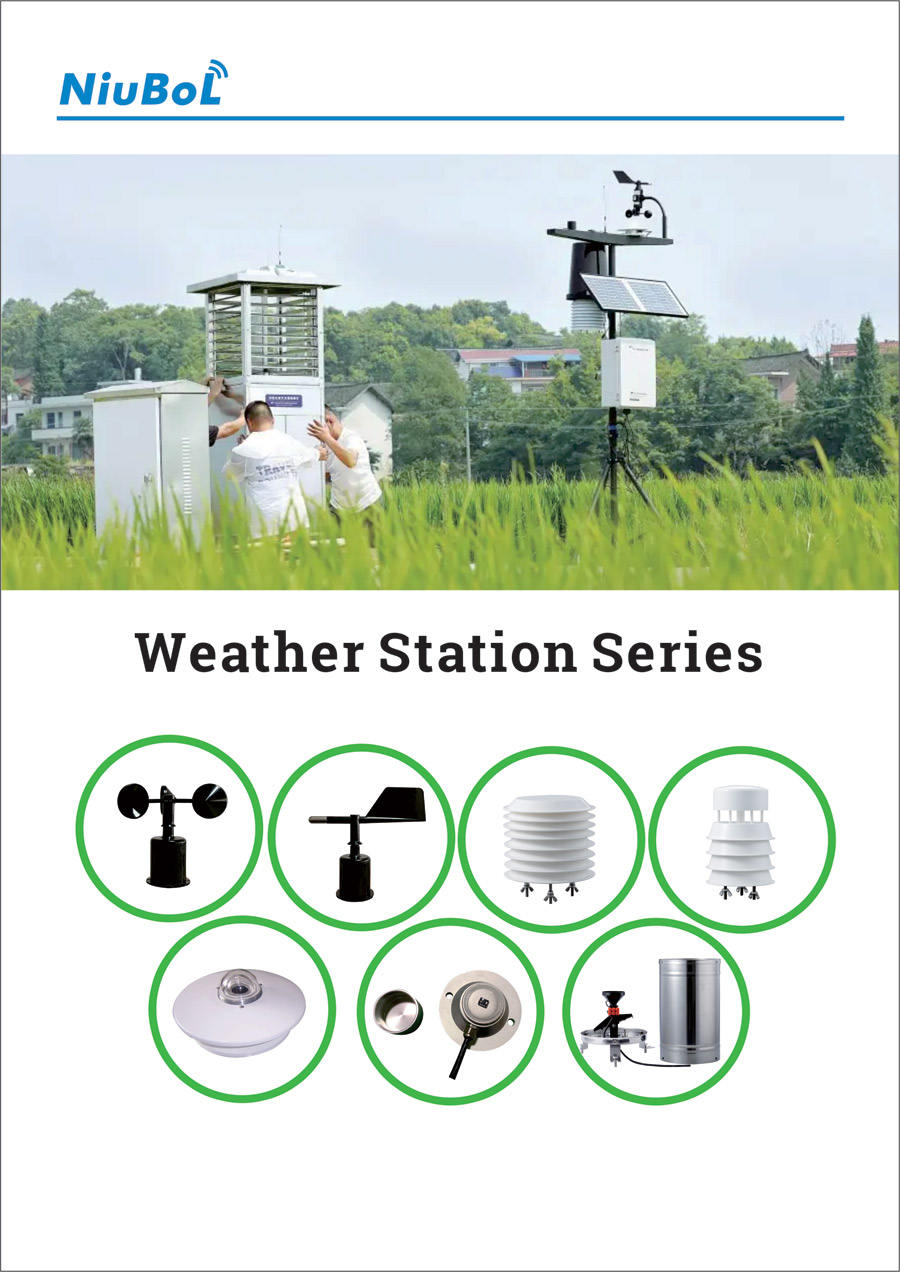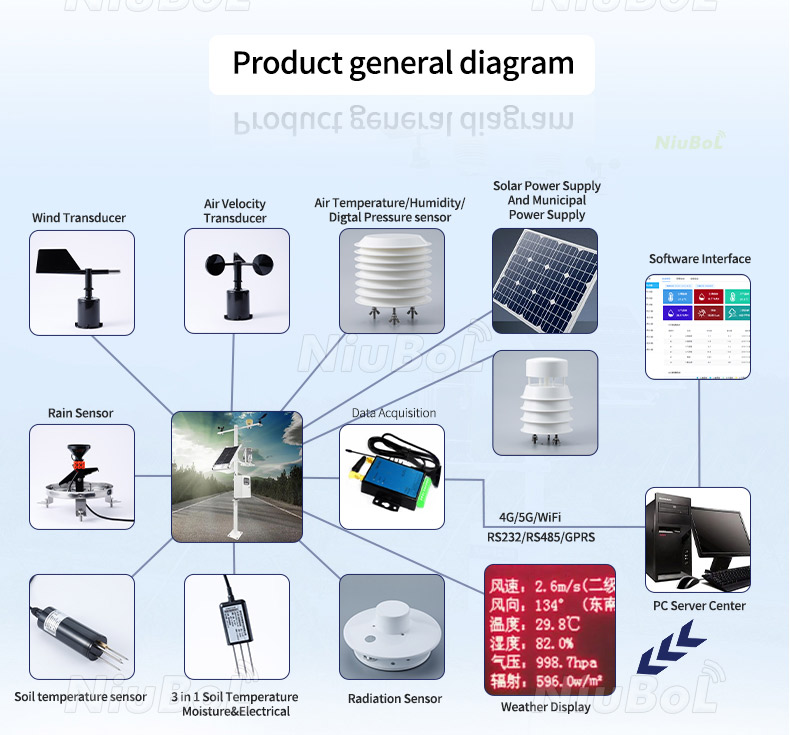

— Blogs —
—Products—
 Consumer hotline +8618073152920
Consumer hotline +8618073152920 WhatsApp:+8615367865107
Address:Room 102, District D, Houhu Industrial Park, Yuelu District, Changsha City, Hunan Province, China
Product knowledge
Time:2024-01-01 17:13:04 Popularity:1107
Smart farming relies heavily on various types of sensors to collect data on environmental conditions, crop growth, and livestock health. Here are some common sensors used in smart farming:
1. Soil moisture sensors: These sensors measure the amount of moisture in the soil, allowing farmers to optimize irrigation and prevent overwatering or underwatering of crops.

2. Weather sensors: These sensors measure temperature, humidity, wind speed and direction, and other weather variables. They help farmers make informed decisions about planting and harvesting, as well as pest and disease control.

3. Crop growth sensors: These sensors monitor plant growth and development using various techniques, such as measuring leaf area, biomass, or chlorophyll content. They can help farmers optimize fertilizer application and identify issues with pests or diseases early on.
4. Livestock health sensors: These sensors can monitor the health and behavior of livestock, such as tracking movement and activity levels, monitoring heart rate and respiratory rate, and detecting illnesses or injuries.
5. Water quality sensors: These sensors can measure parameters such as pH, dissolved oxygen, and turbidity in bodies of water. They can help farmers maintain healthy aquatic environments for fish and other aquatic animals.
6. Nutrient sensors: These sensors can measure nutrient levels in soil or water, allowing farmers to optimize fertilizer use and prevent nutrient runoff or pollution.
7. Imaging sensors: These sensors capture images of crops or livestock using techniques such as hyperspectral imaging or thermal imaging. They can help identify areas of stress or disease in crops, or detect issues with animal health.
By collecting and analyzing data from these sensors, farmers can make more informed decisions about their operations, optimize resource use, and improve crop yields or livestock health.

Environmental monitoring: sensors can be used to monitor farmland environmental parameters, such as temperature, humidity, light intensity, carbon dioxide concentration and so on. These parameters have an important impact on the growth of crops, and by monitoring these parameters in real time, it can help farmers understand the growth status and environmental conditions of farmland, and take appropriate management measures in a timely manner, so as to improve the yield and quality of crops.
Precision irrigation: Using soil moisture sensors to monitor soil moisture conditions, combined with parameters such as rainfall and air temperature, helps farmers to irrigate and fertilize more accurately, improving irrigation efficiency and saving water.
Crop growth monitoring: By using a solution that combines image recognition technology and sensors, it is possible to realize real-time monitoring of farmland and automatic identification of crop growth. This helps farmers to detect pests, diseases, weeds and other problems in time and take appropriate control measures.
Prediction and decision-making: Through long-term monitoring and analysis of environmental parameters in farmland, it is possible to predict the growth trend of crops and the environmental problems they may face, helping farmers to make more scientific and rational planting plans and decisions.

Agricultural automation and intelligence: Sensors can be used in combination with agricultural automation equipment to achieve automated irrigation, fertilization, spraying and other management. At the same time, through data analysis and machine learning and other technologies, it can realize the intelligence and refinement of agricultural production, and improve the efficiency of agricultural production and management level.
In summary, the application scenarios of sensors in smart agriculture are very extensive, and they can help farmers understand the environmental conditions of farmland, improve irrigation efficiency, monitor crop growth, develop scientific and reasonable planting plans and realize the automation and intelligence of agricultural production. These applications help to improve the management level of agricultural production and the degree of intelligence, and provide technical guarantee for the precision and intelligence of agricultural production.
Related recommendations
Sensors & Weather Stations Catalog
Agriculture Sensors and Weather Stations Catalog-NiuBoL.pdf
Weather Stations Catalog-NiuBoL.pdf
Related products
 Combined air temperature and relative humidity sensor
Combined air temperature and relative humidity sensor Soil Moisture Temperature sensor for irrigation
Soil Moisture Temperature sensor for irrigation Soil pH sensor RS485 soil Testing instrument soil ph meter for agriculture
Soil pH sensor RS485 soil Testing instrument soil ph meter for agriculture Wind Speed sensor Output Modbus/RS485/Analog/0-5V/4-20mA
Wind Speed sensor Output Modbus/RS485/Analog/0-5V/4-20mA Tipping bucket rain gauge for weather monitoring auto rainfall sensor RS485/Outdoor/stainless steel
Tipping bucket rain gauge for weather monitoring auto rainfall sensor RS485/Outdoor/stainless steel Pyranometer Solar Radiation Sensor 4-20mA/RS485
Pyranometer Solar Radiation Sensor 4-20mA/RS485
Screenshot, WhatsApp to identify the QR code
WhatsApp number:+8615367865107
(Click on WhatsApp to copy and add friends)